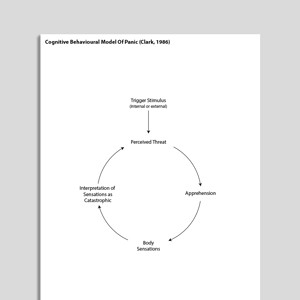Coping With Body Sensations (Psychology Tools For Overcoming Panic)
Psychology Tools for Overcoming Panic takes a cognitive behavioral therapy (CBT) approach to this common anxiety problem. This chapter discusses interoceptive exposure as a technique for working with uncomfortable body sensations.

Related resources
Tags
Languages this resource is available in
- English (GB)
- English (US)
Problems this resource might be used to address
Techniques associated with this resource
Introduction & Theoretical Background
Psychology Tools for Overcoming Panic takes a cognitive behavioral therapy (CBT) approach to this common anxiety problem. This chapter discusses the role of body sensations in panic and how they are subject to catastrophic misinterpretation and avoidance. It introduces interoceptive exposure as a technique for working with uncomfortable body sensations and guides the reader through instructions to complete exposure to body sensations.
Therapist Guidance
This is a Psychology Tools workbook chapter. Suggested uses include:
- Client handout – use as a psychoeducation and skills-development resource
- Discussion point – use to provoke a discussion and explore client beliefs
- Therapist learning tool – improve your familiarity with a psychological construct
- Teaching resource – use as a learning tool during training
References And Further Reading
- Barlow, D. H. (2004). Anxiety and its disorders: The nature and treatment of anxiety and panic. Guilford press.
- Clark, D. M. (1986). A cognitive approach to panic. Behaviour research and therapy, 24(4), 461-470.
- Clark, D. M. (1994). Cognitive therapy for panic disorder. American Psychiatric Association.





